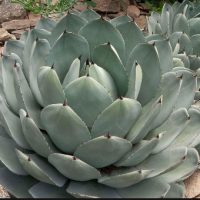January 2019 Plant Profile: Grevillea

Your neighborhood hummingbirds will appreciate the nectar producing flowers on these winter blooming shrubs.
Read moreWinter Interest at the Washington Park Arboretum

1) Camellia sasanqua Sasanqua Camellia
This glossy evergreen shrub with attractive flowers is native to China and Japan.
There are many cultivated varieties of this species with the first ones being recorded from Japan around 1700. Over 15 varieties reside in our Camellia Collections.
The plant was valuable to early Japan as the leaves were used for tea and the seeds used to make tea seed oil.
Fall Highlights of the Arboretum Creek

1) Taxodium distichum Bald Cypress
This deciduous conifer in the family, Cupressaceae grows in marshy and seasonally inundated soils.
Bald Cypress are famous for their “knees”, woody conical projections that emerge from the soil.
The purpose of these knees is still not entirely known. Some speculate they help oxygenate the roots or provide stability in the often loose swampy soils this species prefers.
Olive Olives: A Medley of Olive Family Members

1) Chionanthus virginicus Fringetree
This deciduous small tree or shrub is native to the southeastern United States.
Its common name refers to the slightly fragrant, spring-blooming flowers which feature airy, terminal, and drooping clusters (4-6″ long) of fringe-like, creamy white petals.
This cutting came from a shrubby specimen located east of the Arboretum Loop Trail and north of the Viburnums.
2) Fraxinus americana ‘Rosehill’ White Ash
This White ash cultivar ‘Rosehill’ is a seedless, broad-conical cultivar that typically grows 35-50’ tall.
Read moreNovember 2018 Plant Profile: Viburnum carlesii

Spicy sweet fragrant flowers in spring followed by red berries in summer and flamboyant fall foliage make the Korean spicebush a superlative shrub for Northwest gardens.
Read moreSummer Camp Staff Nominated for Governor’s Award

Our Pre-K summer camp staff has been nominated for the Governor’s Youth Employer Award in recognition of their work this year with students from YES II. Youth Employment Solutions (YES) is sponsored by the Department of Services for the Blind (DSB) and the Washington State School for the Blind to focus on career preparation. YES II is a six week program that provides valuable work and learning experience to high school students.
Read moreAutumn Colors Appear at the Washington Park Arboretum

1) Viburnum rhytidophyllum Leatherleaf Viburnum
This large evergreen shrub grows to 6-10 feet and is native to central and western China.
Fragrant creamy-white clusters of flowers emerge in spring, followed by berries in the fall that first appear red and change to glossy black.
You can view this shrub along the east side of the Arboretum Loop Trail in the Viburnum Collection.
October 2018 Plant Profile: Malus fusca

One of the Pacific crabapples growing at the Arboretum was recently declared a national champion for its impressive size. This native tree tolerates wet soil and has fragrant flowers in the spring. In late autumn the small crabapples add interest to the bare branches.
Read moreLate Summer Colors Appear at the Washington Park Arboretum

1) Castanea crenata Japanese Chestnut
Though it is one of the smaller species of chestnut, C. crenata is still a valued food tree in its native Japan. Ordinarily the nuts are also smaller than those of the European varieties.
This specimen is located on the east side of our field nursery along the gravel path.
2) Cephalotaxus harringtonia var. ‘Nana’ Dwarf Plum Yew
Native to the forest understories of eastern Asia, this small, evergreen shrub is known to thrive in semi-shaded places rather than in full sunshine.
Read more